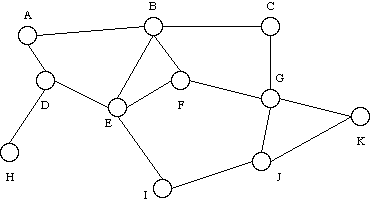
Historically, most communications systems have started with point-to-point links which directly connect together the users wishing to communicate using a dedicated communications circuit. As the distance between users increases beyond the length of the cable (e.g. the length of a telegraph wire), the connection between the users was formed by a number of sections which were connected end-to-end in series to form the circuit. The connection between the users (A and D) in the figure below (i.e. A and D) is represented by a series of links (AB, BC, and CD) each link connects two entities known as nodes. For a point-to-point circuit, (also known as a permanent circuit) the nodes are patch panels which provide a simple connection between the two links (i.e. the two transmission circuits).

A connection between two systems A & D formed from 3 links
As the number of connected users increased, it has become infeasible to provide a circuit which connects every user to every other user, and some sharing of the transmission circuits (known as "switching") has become necessary. To accomplish this goal, the data communications network has evolved. A network is a set of nodes that are interconnected to permit the exchange of information.
Historically, three switching techniques have been proposed for building networks:
Each allows sharing communication facilities among multiple users (end systems), and each uses equipment located at the nodes (intermediate systems) to replace the patch-panels used in a point-to-point connection. Packet switching is most often used for data communication. Most networks consist of many links (see the figure below) which allow more than one path through the network between nodes. A data communications network must be able to select an appropriate path for each required connection.

A mesh of network nodes (A-K) connected by links.
Any of the three approaches (circuit switching, message switching, and packet switching) could yield minimum delay in a particular situation, though situations where message switching yields minimum delay are rare. The relative performance of circuit switching and packet switching depends strongly on the speed and "cost" of establishing a connection.